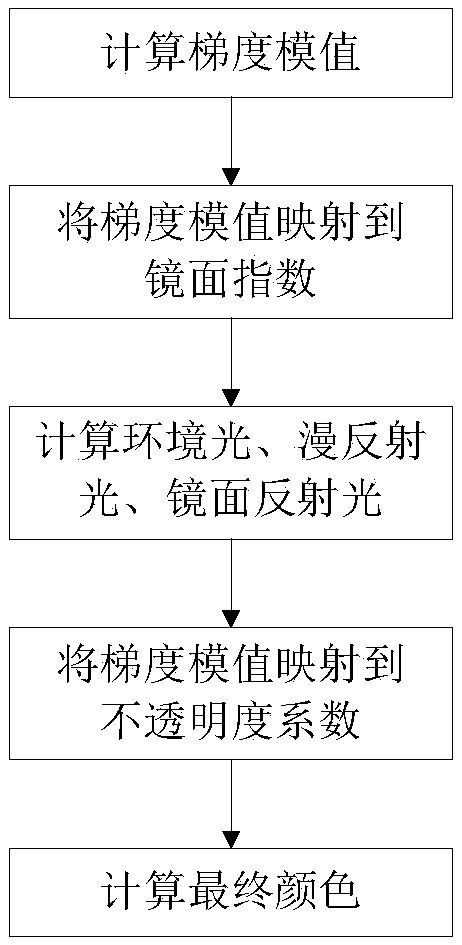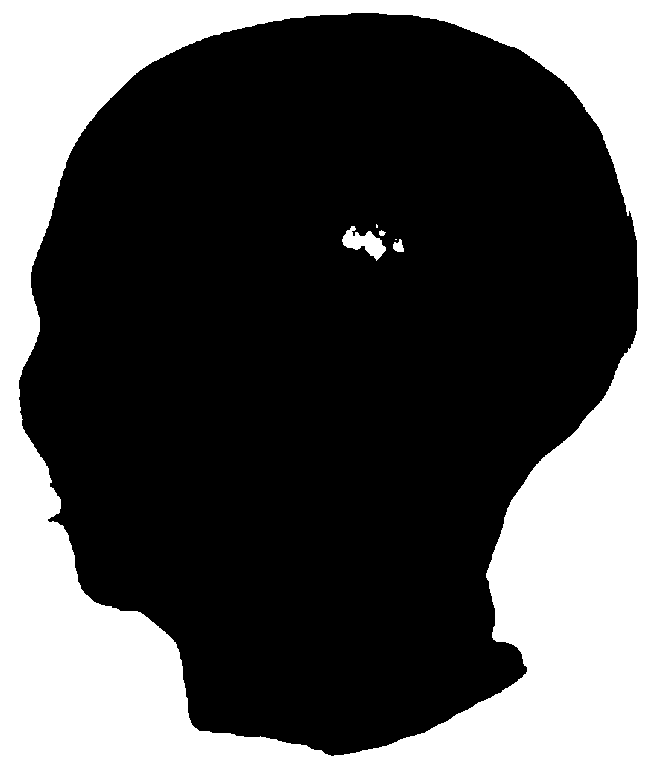Blinn-Phong illumination enhancement algorithm based on gradient adaptation
An enhanced algorithm and self-adaptive technology, applied in computing, 3D image processing, image data processing, etc., can solve problems such as low brightness contrast and unprotrusive borders, and achieve the effect of enhanced contrast and real rendering effect
- Summary
- Abstract
- Description
- Claims
- Application Information
AI Technical Summary
Problems solved by technology
Method used
Image
Examples
Embodiment Construction
[0043] The invention proposes a gradient-adaptive Blinn-Phong illumination enhancement algorithm. The first step is to use the central difference method to calculate the gradient modulus of the voxel gray value. In the second step, the gradient modulus is linearly mapped to the specular index, and the ambient light, diffuse reflection light, specular reflection light and comprehensive light intensity are calculated according to the Blinn-Phong lighting model. The third step is to linearly map the gradient modulus to the opacity coefficient, and multiply the comprehensive light intensity obtained in the previous step by the opacity coefficient to obtain the final color. The present invention uses the gradient modulus to distinguish the characteristics of the boundary and the interior of the material. On the basis of the Blinn-Phong illumination model, the voxels with different gradients are adaptively endowed with different highlight effects and opacity, which enhances the cont...
PUM
 Login to View More
Login to View More Abstract
Description
Claims
Application Information
 Login to View More
Login to View More - R&D
- Intellectual Property
- Life Sciences
- Materials
- Tech Scout
- Unparalleled Data Quality
- Higher Quality Content
- 60% Fewer Hallucinations
Browse by: Latest US Patents, China's latest patents, Technical Efficacy Thesaurus, Application Domain, Technology Topic, Popular Technical Reports.
© 2025 PatSnap. All rights reserved.Legal|Privacy policy|Modern Slavery Act Transparency Statement|Sitemap|About US| Contact US: help@patsnap.com



